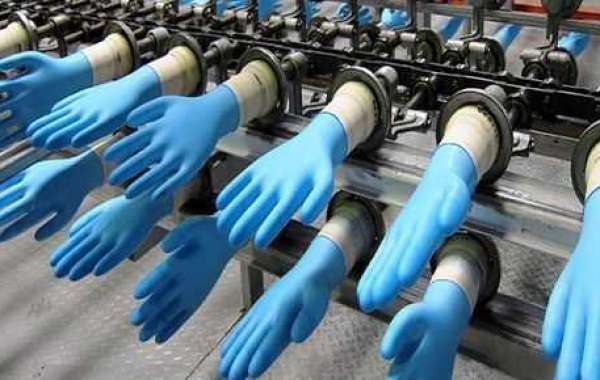How Are Nitrile Gloves Made
Unlike latex gloves, nitrile gloves and vinyl gloves are not produced from natural rubber. Even though these gloves are made of synthetic materials, the technique of making them is substantially the same as the process of making latex gloves.
Nitrile gloves and vinyl gloves will not worsen latex allergies, and these two types of gloves are increasingly replacing latex gloves in most applications, particularly those involving food preparation and medical care.

Developing the synthetic sources of material
Both nitrile gloves and vinyl are created by techniques that are quite similar to one another. Copolymers are substances that are created through the bonding of molecules, and nitrile butadiene rubber, often known as NBR, is a kind of copolymer. NBR is used to make nitrile gloves. In the case of NBR, the two components are butadiene and acrylonitrile, and the method that scientists use to combine them is referred to as the copolymerization process.
Acrylonitrile increases the chemical resistance of the nitrile gloves, while butadiene promotes flexibility and tear resistance. Both of these molecular properties contribute to the overall performance of the gloves. Nitrile has a resistance to puncture that is three times that of latex and it also has a stronger resilience to chemicals.

PVC monomers are the only component of vinyl gloves. PVC stands for polyvinyl chloride. PVC is considered to be a polymer despite the fact that chemists only use a single kind of monomer in the production process. After polymerizing the material, the scientists next add a plasticizer to the PVC to make it more malleable. This results in the material being flexible; if this were not the case, the PVC would be hard, similar to how it is when it is formed into pipe.
PVC is produced at a low cost, making it a more economical choice than latex in many applications. It is a popular option for applications that need regular changes of gloves, such as food service, janitorial and sanitation work, and salon and beauty work.
Manufacturing process of gloves
After the preparation of the synthetic materials of nitrile gloves, those materials are next included into the manufacturing process. This procedure is quite similar to the stages that are involved in the production of latex gloves, with a few notable exceptions:
The ceramic, hand-shaped formers are then put through a cleaning process that involves bleach and water. This is done to eliminate any residue that may have been left behind. After being washed and allowed to dry, the formers are next submerged in a solution containing calcium carbonate and calcium nitrate. This step causes the synthetic materials to coagulate around the formers. After that, the formers undergo a second drying.

The formers are dipped into tanks of either NBR or PVC using machinery. The subsequent stage requires subjecting the components to a high temperature in order to shape the gloves while they continue to dry.
One of two techniques, known as chlorination or polymer coating, is applied to nitrile gloves in order to make donning them less difficult. In the process of chlorination, the material on the gloves is subjected to chlorine in the form of an acid combination or gas in order to make it more durable and slippery. By adding a layer of polymer, the glove’s surface is given a polymer coating, which lubricates it.
In the last step of the process, which is referred to as the stripping phase, blasts of air are used to remove the gloves from the formers.
Checking for quality
In the last stages of the production process, the nitrile gloves are put through quality assurance testing before being sent out.
The pinhole leak test is a component of the quality control procedure. This test is mandated by the Food and Drug Administration of the United States (FDA) and is based on standards established by the American Society for Testing and Materials (ASTM). Even though every glove contains at least a few pinholes, the purpose of this test is to determine whether or not a glove has a sufficient number of pinholes to cause a perceptible leak.
After pouring one litre of water into each glove, the workers next hang the nitrile gloves upside down for two minutes to determine whether or not the gloves can support the weight of the water. Exam-grade gloves are held to a higher degree of quality than industrial-grade gloves, which just need to pass fundamental quality tests in order to be considered acceptable; nonetheless, the higher criteria for exam-grade gloves cannot be waived.








